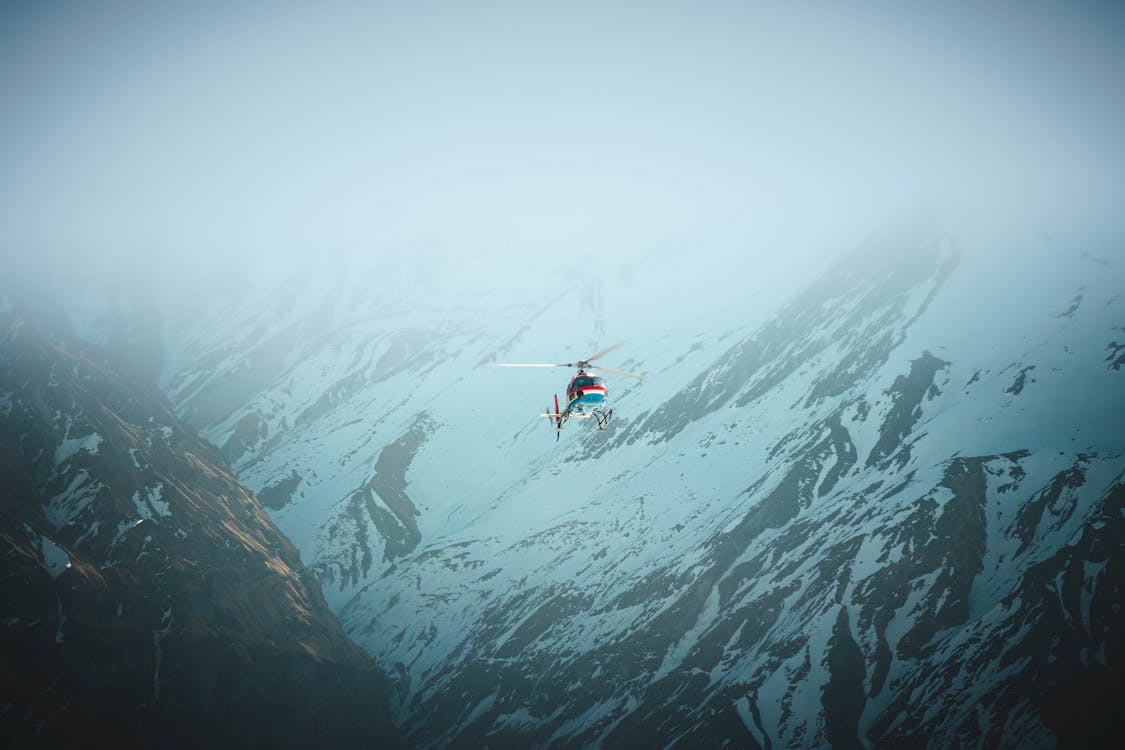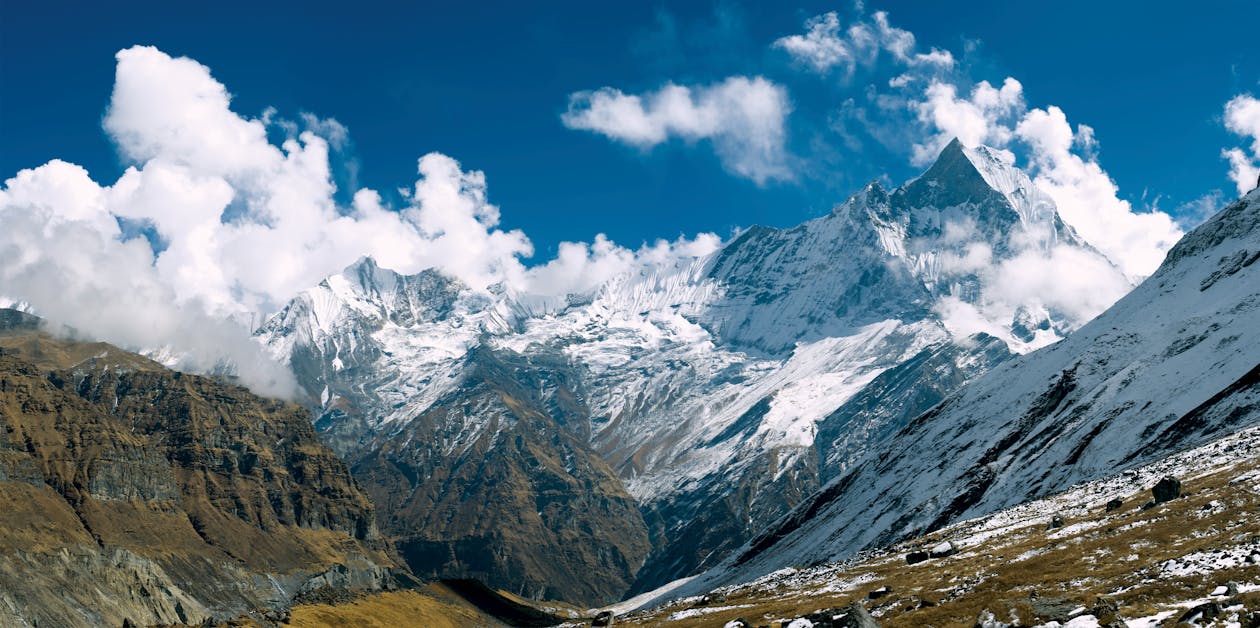Annapurna Base Camp Trek | Cost | FAQ | Itinerary| Best Time | Best Offer (2025)
Annapurna Base Camp Trek : A Life-Changing Himalayan Adventure for Trekkers
Annapurna Base Camp Trek is one of Nepal's most famous trekking routes, offering trekkers a remarkable sightseeing experience of snow-capped mountains, green valleys, and cultural treasures. Trekkers often prioritize this trek for its perfect blend of adventure, nature, and culture. As you hike through diverse landscapes and scenic villages, you’ll be treated to views of the imposing Annapurna massif, including towering peaks like Annapurna , Machapuchare, and Hiunchuli. Whether you're a novice trekker or an experienced mountaineer, this trek promises a once-in-a-lifetime experience in the Himalayas.
Do you want personalized information about this trek?
Get in touch for more details and personalized services.
📱 WhatsApp ✉️ Email 📞 Book NowAnnapurna Base Camp Trek : Video Guide
Why Choose the Annapurna Base Camp Trek for Your Himalayan Adventure?
Israeli Tourist always choose Swissa Agency for the advantages below, We offer and serve all international tourists that plan to visit Nepal. We are also registered with Trekking Agencies Association of Nepal
- Enjoy a bird's-eye view of Annapurna, Machapuchare, and other stunning summits
- Explore breathtaking rhododendron forests, paddy fields, and alpine meadows
- Relish the rich culture of the Gurung and Magar people in remote villages
- Hike to Annapurna Base Camp at 4,130 meters, one of the most scenic spots in the Himalayas
- Experience a relatively straightforward but challenging hike, suitable for moderately fit hikers
Trekking through the Annapurna Region: A Journey Like No Other
The Annapurna Base Camp Trek begins with a drive to the trek starting point, either Phedi or Nayapul, from Pokhara. From there, you walk through picturesque villages and dense forests. As you climb higher, the scenery becomes even more spectacular, with each step revealing new vistas of the Annapurna range. The trek concludes at Annapurna Base Camp, where trekkers are surrounded on all sides by towering peaks—a view that is considered one of the most breathtaking in the region. This trek offers a fantastic introduction to the Himalayas for those looking for a less challenging trek compared to some other high-altitude routes.
Key Highlights of the Annapurna Base Camp Trek for Trekkers
- Reach Annapurna Base Camp (4,130m) for a panoramic view of the entire Annapurna range
- Trek among beautiful rhododendron forests and terraced fields
- Explore traditional villages and learn about the culture of the Gurung and Magar people
- Be amazed by stunning landscapes, from subtropical rainforests to alpine meadows
- Experience a moderately challenging trek with tolerable altitudes, suitable for trekkers of all levels
Yes, we offer discounts and prices are negotiable!
Want the best deal on your Annapurna Circuit Trek?
📱 WhatsApp ✉️ Email 📞 Book NowTrekking with Swissa Agency: Your Trusted Partner for the Annapurna Base Camp Trek
Swissa Agency offers a specially designed Annapurna Base Camp Trek for trekkers. With over 30 years of Himalayan trekking experience, our experienced guides provide expert guidance and support, ensuring a smooth and enjoyable journey. We take care of all arrangements, from permits to accommodations and transportation, allowing you to focus on enjoying the trek. Personalized itineraries allow you to trek at your own pace and maximize your time in the Himalayas. Trust Swissa Agency for a trek filled with comfort, expert advice, and memories to last a lifetime.

More Treks to Watch :
- Annapurna Circuit Trek
- Annapurna Base Camp Trek
- Mardi Himal Trek
- Nar-Phu Valley Trek
- Ghorepani Poon Hill Trek
- Annapurna Circuit via Tilicho Lake
Preparation and Altitude Considerations for the Annapurna Base Camp Trek
The Annapurna Base Camp Trek is ideal for trekkers with moderate fitness. The highest point, Annapurna Base Camp (4,130m), doesn’t present significant altitude risks, but it’s still important to prepare well. Our experienced guides ensure safe acclimatization, and we schedule rest days to help you prepare. Hydration, gradual ascent, and mental readiness are essential for making the most of this trek.
Our Services for Tourists
We offer specialized services for trekkers:
- Experienced guides to ensure clear communication and personalized attention
- Tailor-made itineraries based on your fitness and experience level
- Organization of visas, trekking permits, and transportation
- Your favorite cuisine in tea houses and lodges
- Transparent trek packages with no hidden charges
Book Your Annapurna Base Camp Trek with Swissa Agency Today!
The Annapurna Base Camp Trek offers stunning mountain vistas, cultural experiences, and Himalayan serenity. Don’t miss out on this life-changing adventure. Book your trek today with Swissa Agency for a seamless experience with expert guides, Hebrew-speaking support, and personalized service. We’ll take care of the logistics, while you focus on making unforgettable memories in Nepal.
We specialize in tailoring experiences for global tourists.
Want personalized service for your trek?
📱 WhatsApp ✉️ Email 📞 Book Now
Trip Overview
The Annapurna Base Camp (ABC) Trek is a world-renowned adventure attracting trekkers from the remotest parts of the globe. At an altitude of 4,130 meters, the base camp offers an awe-inspiring gateway to Mount Annapurna, the 10th highest mountain in the world and 8,091 meters above sea level. The trek is an incredible experience amidst diverse landscape, cultural exposure, and dramatic Himalayan views.
The Annapurna Sanctuary boasts a stunning position, being surrounded by such giant peaks as Annapurna I (8,091 m), Annapurna South (7,219 m), Machapuchhre (6,993 m), and Hiunchuli (6,441 m). The ABC trek is famous for its sheer altitude variation and rich biodiversity, and it is not to be missed.
Winding through thick rhododendron woods, rolling rice fields, and hillside fields, the trek offers some of the most spectacular mountain vistas in the world. Along the way, trekkers are treated to the grandeur of the Himalayas as well as gaining a deep appreciation for Nepalese culture and tradition.
The ABC trek is more than merely a visual adventure. It allows trekkers to experience the rich cultural heritage of ethnic Gurung, Magar, Thakali, and Loba societies. Friendly locals live in quaint villages in the Annapurna foothills. The Buddhist shrines, Gumbas, can be visited, along with traditional customs, a look into an apparent timeless existence.
The Annapurna Base Camp trek tends to begin in Kathmandu, and then there is a picturesque drive to Pokhara. Then the trek begins from Hile, along the Modi River course through dense rhododendron and bamboo forests. As one goes up, the forests grow thinner and thinner to reach the narrowing gorge at Hinku Cave.
As they approach the Annapurna Sanctuary, trekkers are greeted by a breathtaking amphitheater of white-capped peaks, with precipitous ridges falling from Hiunchuli on one side and Machapuchhre on the other. The beautiful landscape fills the heart with wonder and awe, with every step of the trek being memorable.
The standard route of the Annapurna Base Camp Trek begins and ends in Pokhara, but can also be done as part of the longer and more extended Annapurna Circuit. Regardless of the course taken, the trek is the perfect blend of physical challenge, beauty of nature, and cultural exposure.
With its snow-capped mountains, unique habitats, and satisfying encounters, the Annapurna Base Camp Trek is a lifetime experience. Embark on this breathtaking journey and create memories that will endure forever in the core of the Himalayas.
Conclusion
Annapurna Base Camp Trek is an offbeat adventure experience that offers a mix of breathtaking landscapes, cultural experience, and personal achievement. Whether you are a seasoned trekker or a novice, the trek offers an unforgettable experience to last a lifetime. With its breathtaking scenery, rich culture, and spirit of adventure, ABC trek is certainly one of the most fulfilling experiences on planet earth. Start planning your trek today and prepare for the trip of a lifetime.
Don't miss the Annapurna Base Camp Trek!
Take the adventure of a lifetime with our expert team guiding you every step of the way.
📱 WhatsApp ✉️ Email 📞 Book NowAnnapurna Base Camp Trek: Detailed Itinerary
Day 1: Arrive in Kathmandu (1,400m) and transfer to hotel.
Day 2: Preparation day in Kathmandu (1,400m); optional sightseeing around the valley.
Day 3: Fly from Kathmandu to Pokhara (822 m).
Day 4: Drive from Pokhara to Ghandruk (1,940 m).
Day 5: Trek from Ghandruk to Sinuwa (2,360 m).
Day 6: Trek from Sinuwa to Dobhan (2,600 m).
Day 7: Trek from Dobhan to Deurali (3,200m).
Day 8: Trek from Deurali to Annapurna Base Camp (4,130m) via Machhapuchhre Base Camp (3,700 m).
Day 9: Trek from Annapurna Base Camp back to Bamboo (2,310 m).
Day 10: Trek from Bamboo to Jhinu Danda (1,780 m).
Day 11: Drive from Jhinu Danda to Pokhara (822 m).
Day 12: Fly or drive from Pokhara to Kathmandu (1,400 m).
Day 13: Free day in Kathmandu (1,400 m) and farewell program by Red Swissa Family.
Day 14: Transfer to Tribhuvan International Airport for international departure.
Do you need a personalized itinerary.
Or a Cheap Deal? Contact us Now
📱 WhatsApp ✉️ Email 📞 Book Now



Comments